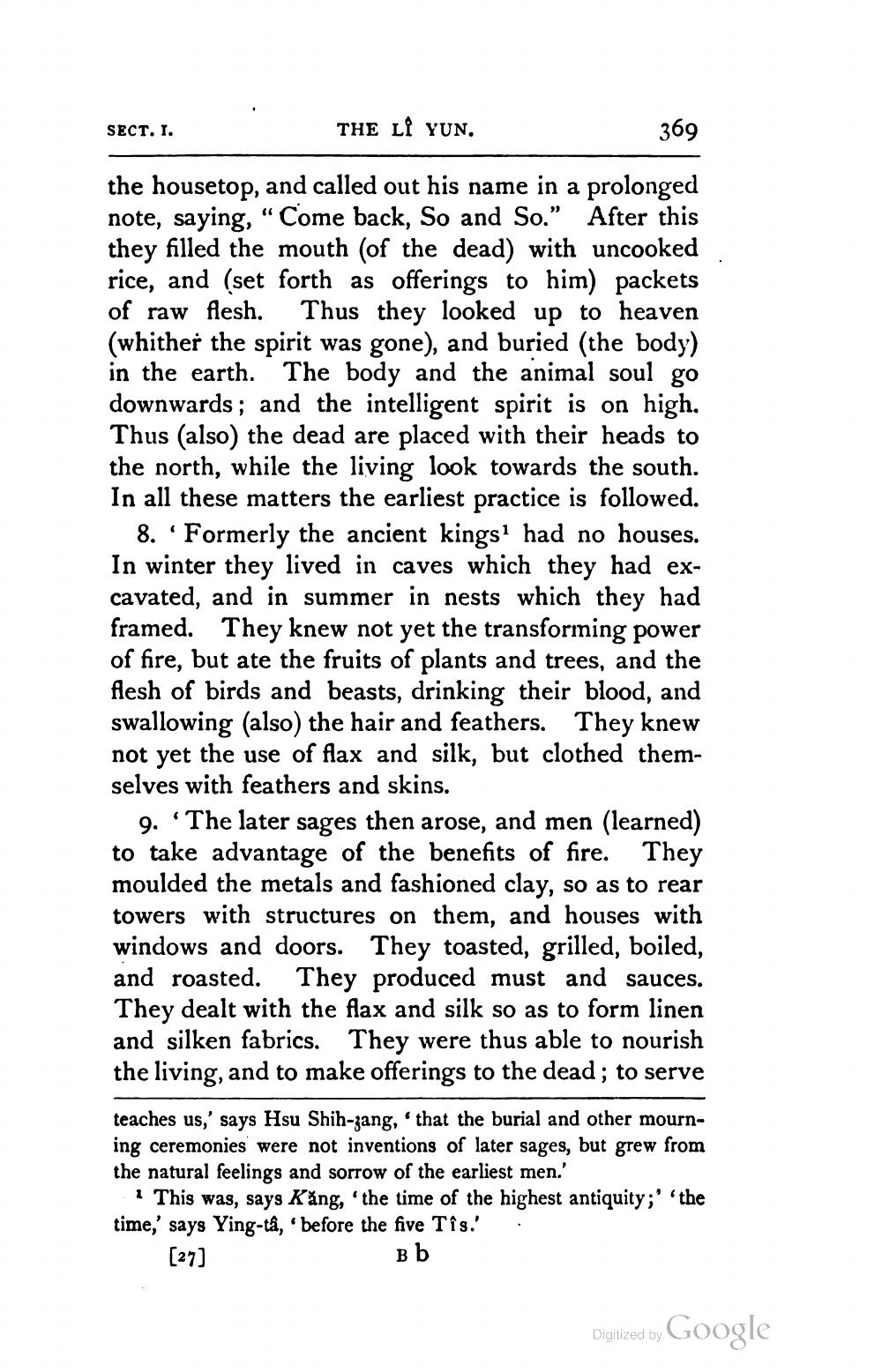________________
SECT. I.
THE LÎ yun.
369
the housetop, and called out his name in a prolonged note, saying, “Come back, So and So.” After this they filled the mouth (of the dead) with uncooked rice, and (set forth as offerings to him) packets of raw flesh. Thus they looked up to heaven (whither the spirit was gone), and buried (the body) in the earth. The body and the animal soul go downwards; and the intelligent spirit is on high. Thus (also) the dead are placed with their heads to the north, while the living look towards the south. In all these matters the earliest practice is followed.
8. 'Formerly the ancient kings had no houses. In winter they lived in caves which they had excavated, and in summer in nests which they had framed. They knew not yet the transforming power of fire, but ate the fruits of plants and trees, and the flesh of birds and beasts, drinking their blood, and swallowing (also) the hair and feathers. They knew not yet the use of flax and silk, but clothed themselves with feathers and skins.
9. “The later sages then arose, and men (learned) to take advantage of the benefits of fire. They moulded the metals and fashioned clay, so as to rear towers with structures on them, and houses with windows and doors. They toasted, grilled, boiled, and roasted. They produced must and sauces. They dealt with the flax and silk so as to form linen and silken fabrics. They were thus able to nourish the living, and to make offerings to the dead; to serve
teaches us,' says Hsu Shih-jang, that the burial and other mourning ceremonies were not inventions of later sages, but grew from the natural feelings and sorrow of the earliest men.'
1 This was, says Kång, the time of the highest antiquity;' the time,' says Ying-tå, before the five Tîs.' . [27]
Bb
Digitized by Google




